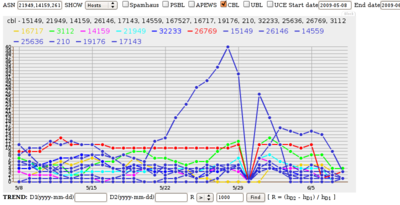Relizon Canada Inc.’s
AS 40034 RELIZON-CDN
jumped from #134 to #3 in the
 May 2013
May 2013
 for Canada All from CBL data.
On May Day CBL saw 1 spam message from AS 40034 and more than 3 million
on May 31.
for Canada All from CBL data.
On May Day CBL saw 1 spam message from AS 40034 and more than 3 million
on May 31.
Relizon was not visible in the
May Canada rankings from PSBL data,
although internally we do see AS 40034 going from #208 to #109
by going from 11 spam messages in April to 26 in May.
 CBL’s heuristics or spam traps or both were apparently much better
at detecting this particular spam source.
CBL’s heuristics or spam traps or both were apparently much better
at detecting this particular spam source.
Relizon’s own website doesn’t seem to be responding at the moment, but Bloomberg Businessweek says they do business process outsourcing solutions, and were formerly known as Crain-Drummond Inc., with the name change coming on acquisition by the Carlyle Group.
-jsq




 IN
IN SA
SA PE
PE TR
TR VN
VN RO
RO










